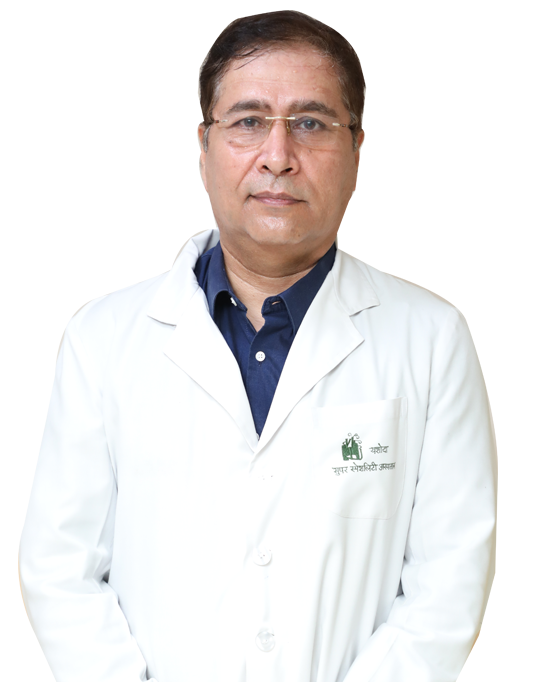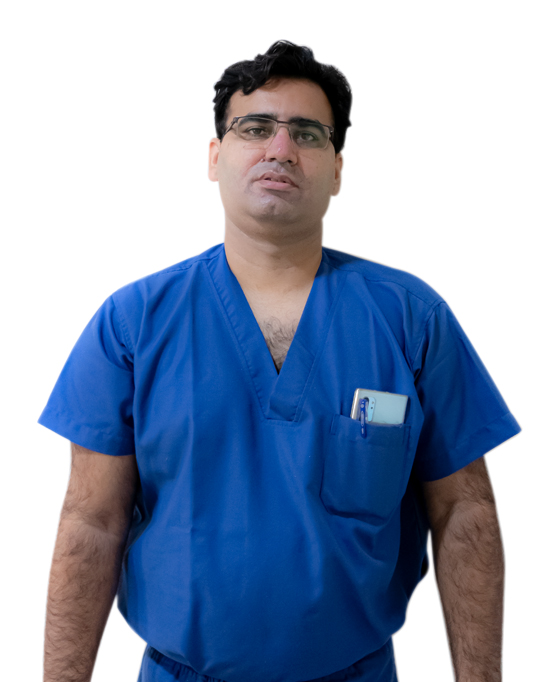
The Centre for Spine Fusion Surgery at Yashoda Hospital provides comprehensive surgical treatments to patients suffering from chronic disorders related to spine vertebrae. Yashoda hospital tops the national lists for a number of spinal procedures, nursing excellence, infection control and much more.
Our best in class medical care with a personalized treatment plan ensures that every patient that leaves the hospital receives optimal care. Our physicians lead a committed team of medical professionals to ensure a comprehensive approach to your care.
We hold the most stringent standards in hygiene, safety, and patient care.
What Is Spine Fusion Surgery?
Spinal fusion surgery is a minimally invasive surgical process that is performed to correct vertebrae (the small bones in the spine).
The surgery aims to prevent the back pain by conducting fusion of two or more vertebrae into one single structure. The patient will not experience discomfort from stretching of nearby nerves, ligaments, and muscles, when the vertebrae are fused, and movement between the two bones is stopped.
Spinal fusion can be done in one of two ways.
- Anterior Lumbar Interbody Fusion: The doctor approaches the patient's spine from the front, through the lower abdomen.
- Posterior Fusion: The surgeon approaches the patient's spine from the back.
What Are The Indicators For Spine Fusion Surgery?
The significant indicators that reflect the need for Spine Fusion Surgery are
- Loss of flexibility and movement
- Chronic pain in the legs, neck, back, and shoulder
- Utter discomfort while sitting or lying down
- Visible deformity in the spine
- Inability to perform various daily activities
- Stiffness in the spine
What Are The Various Medical Conditions We Treat Under Spine Fusion Surgery?
Some of the key medical conditions we treat include:
- Degenerative disk disease
- Fractured vertebra (broken spinal bone)
- Scoliosis Spinal stenosis (narrowing of the spinal canal)
- Spondylolisthesis (forward shifting of a spinal disk)
- Infection
- Herniated disk
- Tumour
Are You A Candidate For Spine Fusion Surgery?
Minimally invasive spine surgery is the most advanced surgical process performed when the other treatment options for people suffering from severe spinal disorders fail. You are a candidate for minimally invasive spine fusion surgery if:
- Non-surgical treatments do not effectively lessen the symptoms of spinal disorder. These treatments include
- Medications
- Physical therapy
- Spinal injections
A patient must talk to a doctor or spine specialist about his/her pain and symptoms in detail, and the outcomes of different treatments tried by him/her. After evaluating all the considerations, your doctor may advise you to undergo surgical treatment to treat the pain.
What Are The Different Types of Diagnostic Procedures Required Before Spine Fusion Surgery?
Your doctor might ask you to take some of the diagnostic tests for evaluation of your current medical condition, which involves:
- Physical examination
- Reflexes
- Muscle strength
- Range of motion
- Sensitivity to touch
- Walking ability
- Possibility of tender regions in the back
- X-ray
- MRI
- CT
- Electromyelogram (EMG)
- Nerve Conduction Studies (NCS)
What Is The Procedure For Spine Fusion Surgery?
Preoperative Details
Our doctors ensure that you are fit for the procedure by performing a series of tests and screening process. You might be prescribed some medicines for a week or two before the surgery to avoid any infections.
Before the operation, the patient receives general anaesthesia and will sleep through the surgical procedure.
Operative Details
- Step 1: An incision is made by the surgeon at the affected site either in the neck or back, throat, side of your spine, or lower abdomen.
- Step 2: The doctor gain access to the vertebrae being fused and use bone grafts to fuse two vertebrae surgically. The bone graft can be harvested from the patient’s pelvis or may come from a bone bank. If the patient is the donor himself, the doctor collects it surgically by making an incision above the pelvic bone, removes a small portion of it, and then closes the incision. The other option to get the bone graft is from the bone bank or donor.
- Step 3: The doctor then fuses the two vertebrae permanently using the bone graft material. The bone graft is placed surgically with the help of metal plates, screws, or rods.
- Step 4: The doctor closes the incisions with sutures and covers them with surgical tape.
Postoperative Details
· The patient may have to stay in the hospital depending on the condition, and to have faster recovery, and physiotherapy sessions may be required.
What Are The Precautions You Should Take After The Spine Fusion Surgery?
The vital precautionary measures one must consider after the treatment are:
- While sitting and sleeping, maintain a proper posture
- Do not perform rigorous exercises
- Follow the doctor’s advice and medicines
- Do not indulge in sexual activities
- Eat a very healthy diet.
- Avoid the use of tobacco in for of Gutka, etc.
- Avoid excessive smoking and drug abuse
- Heavy consumption of alcohol is prohibited
What Are The Several Benefits Of Spine Fusion Surgery?
The minimally invasive spine fusion surgery includes the following advantages:
- Small incision
- Minimal scar tissue formation
- Short recovery
- High Success rate
- Minimal blood loss
- Preservation of spinal mobility
- Local Anaesthesia
- Less hospital stay
- Same-day surgery
Are There Any Complications Involved?
Some of the risk factors linked with minimally invasive Spine Fusion Surgery include:
- Bleeding
- Blood clots
- Infection
- Pain
- Risks from anaesthesia
These risk factors are very mild and usually reversible with the help of some medication. Other potential risk factors include:
- Nerve injury
- Pseudoarthrosis
Donor bone graft complications like
- Infection
- Tissue rejection
Watch out for these warning signs such as:
- Swelling or redness
- Drainage by your wound
- Fever over 100 degrees F
- Increased pain
- Shaking chills
However, see a doctor immediately if you experience these symptoms for a longer duration.
Make an Appointment
We are eager to help you at every step of your medical journey from hospital and back to your home.
For Appointment
+91 - 9810922042
For Any Query
0120 – 4182000
Meet Our Doctors



